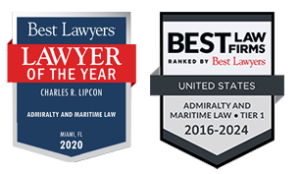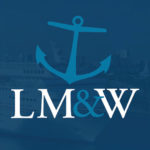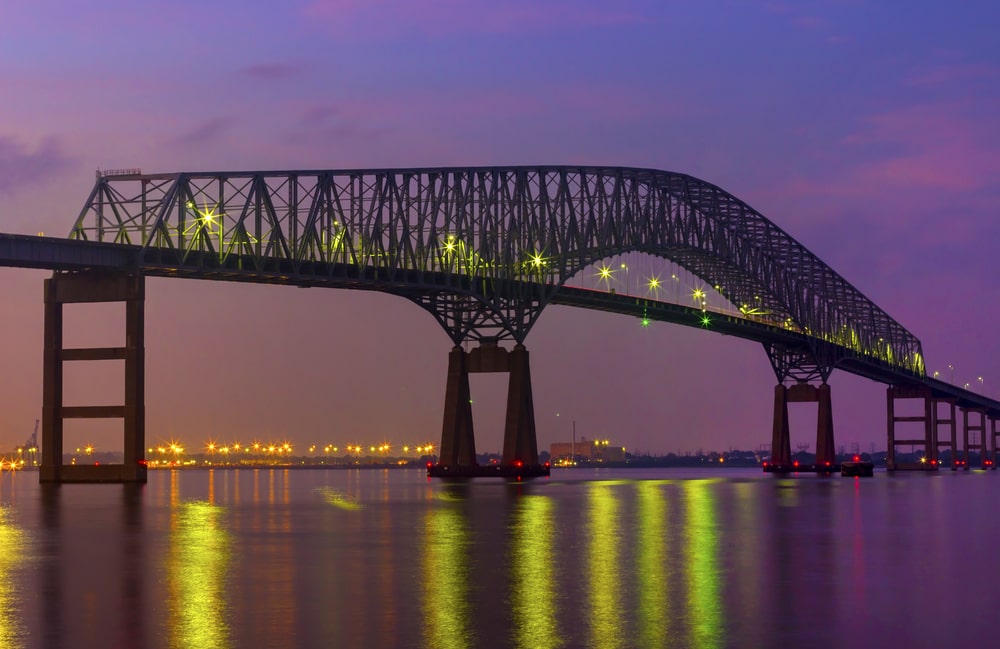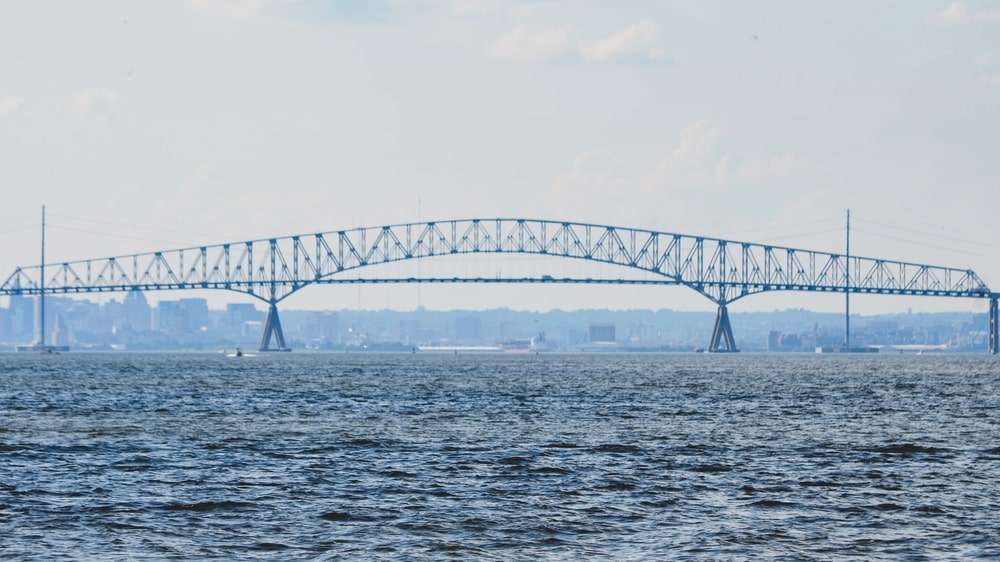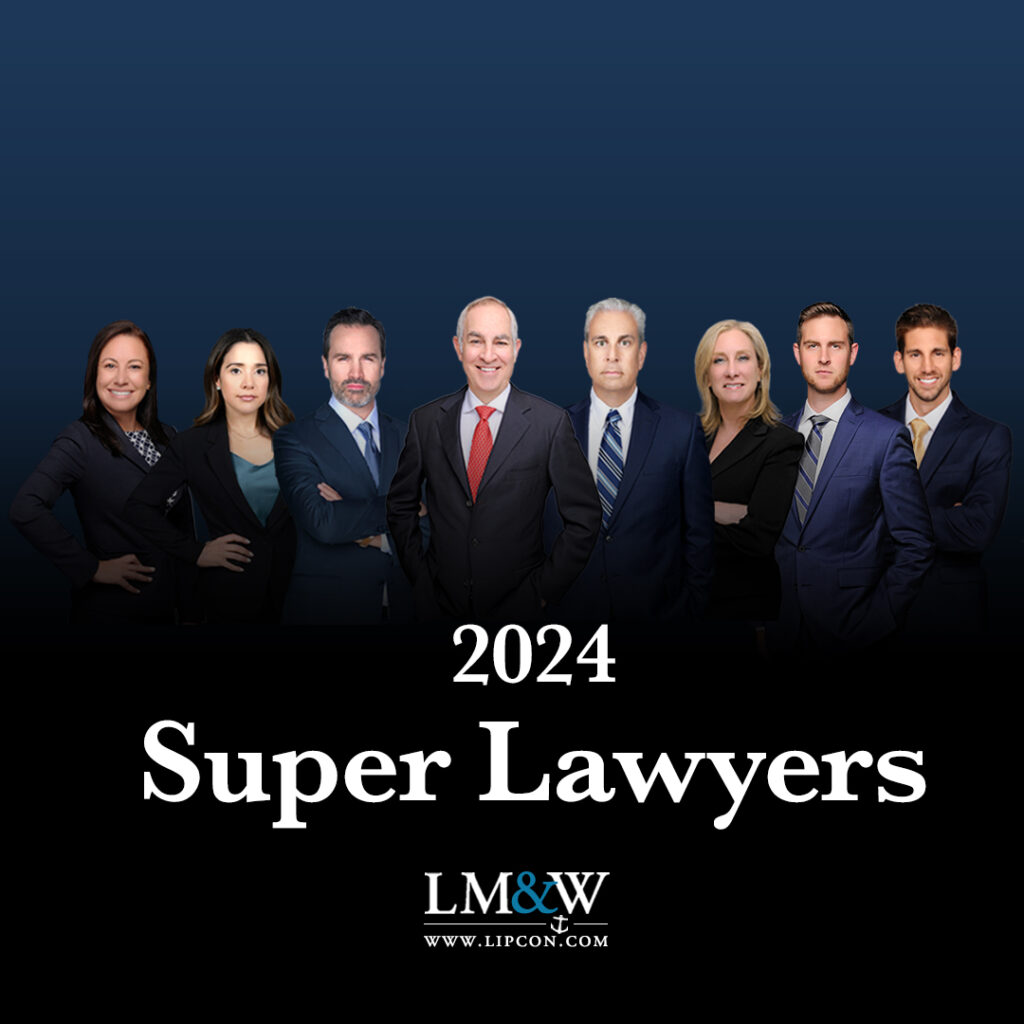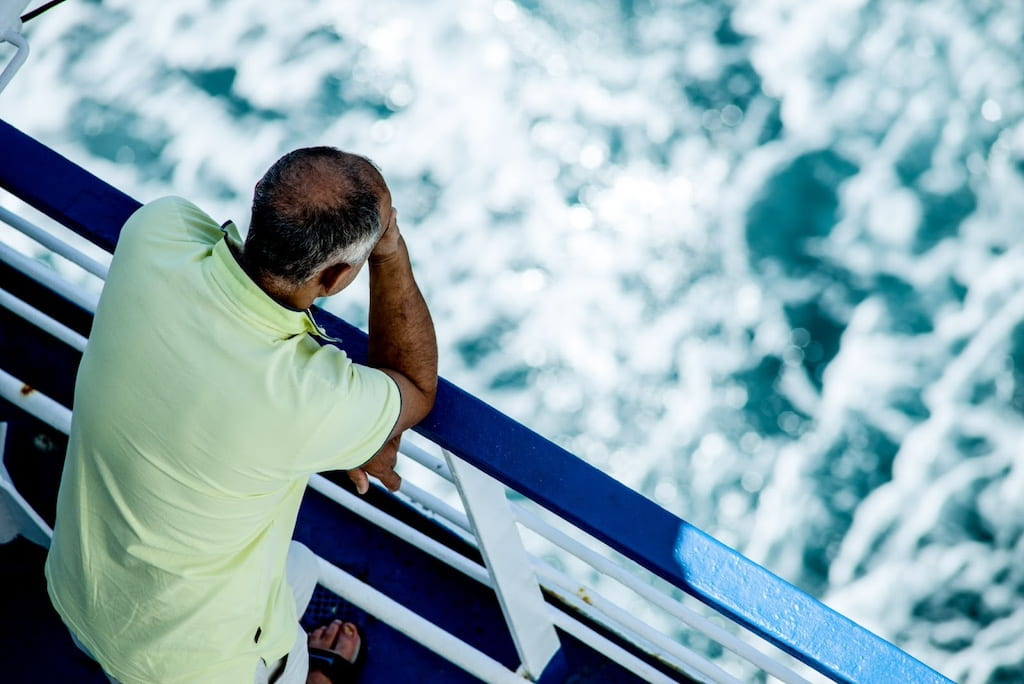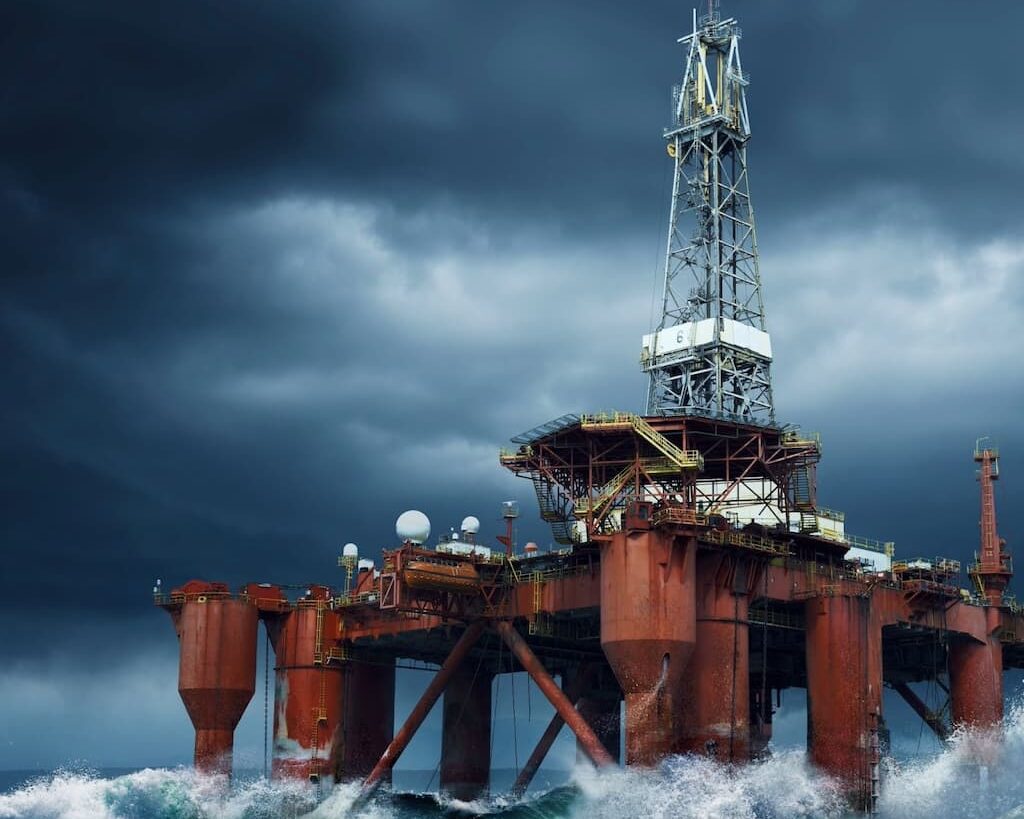Those who have been injured working on a cargo ship, bridge, or port, and those whose loved ones passed away due to this preventable tragedy must not hesitate to seek out a leading maritime accident and injury law firm. Lipcon, Margulies & Winkleman, P.A. has 16 personal injury lawyers dedicated to maritime cases, including attorneys licensed in Maryland, each of whom are here to help victims get compensated fully and fairly for the suffering they have experienced. Our track record includes recovering more than $300 million for clients since 1971, recognition as one of the “Best Law Firms” ® by US News & World Report, and countless appearances on television as experts on maritime law.
Recovering from the aftermath of a maritime accident can be difficult. You are hurt, and the shipping companies often try to protect their funds over your safety. When your injuries or the death of a loved one are being ignored, reach out for help from a maritime accident lawyer for help holding these companies liable for your injuries. The need for such an attorney after a devastating accident has become nation-wide news recently with the collapse of the Francis Scott Key Bridge.
Astonishingly, just days after this tragedy, the owners of the at fault vessel, have already filed a Limitation of Liability lawsuit, which seeks to limit the liability of the owners to the value of the vessel post incident, which is alleged to be merely $43,000,000. This is nowhere near enough money to adequately compensate the families who lost their loved ones in this preventable crash. Fortunately, there were legal avenues and arguments to be made that can defeat this lawsuit filed by the owners and ensure there is no limit placed on the amount of money that can be recovered by the victims and their families. We have successfully defeated numerous Limitation of Liability proceedings over the course of our firm’s history since 1971.
These proceedings filed by the shipowner stems from a law that was passed in 1851. The law was passed 175 years ago to prevent shipping giants from suffering steep and insurmountable losses from disasters at sea, and to promote maritime commerce. There is absolutely no need to further promote maritime commerce in today’s world when global shipping companies are raking in billions. There have been numerous attempts over the years to change this ancient law, and hopefully this preventable tragedy in Baltimore will be the moment that this law is finally changed. Simply put, giant shipping companies should not be entitled to a get out of jail free card.
Deadly Maritime Accident in Baltimore
On March 27, 2024, the Baltimore community — as well as the rest of the United States — was shaken by a catastrophic event when the Francis Scott Key Bridge, a major infrastructural asset, collapsed in the early hours of the morning. A container ship, the Dali, lost control and collided with the structure, causing significant portions of the bridge to collapse into the Patapsco River. The incident instantly became a focus of national attention as rescue operations commenced in the wake of the disaster.
The bridge’s collapse is a tragic occurrence, resulting in loss and injuries. Local authorities have mobilized emergency services and first responders, working tirelessly to secure the affected area and provide aid to the victims. While details about the full scale of the disaster are still emerging, the city braces itself for the long-term challenges in rebuilding and ensuring the safety of its transportation networks. The incident highlights the importance of continual investment in and monitoring of vital infrastructure to prevent such occurrences, as well as the need to hold large companies responsible for damages, injuries, and deaths.
Background on the Baltimore Bridge Collapse
The Baltimore bridge collapse involves the Francis Scott Key Bridge, a significant structure in Maryland’s transportation infrastructure.
Infrastructure and History
The Francis Scott Key Bridge, commonly referred to as the Key Bridge, has long been an integral part of Baltimore’s infrastructure. Opened in 1977, it was named after the author of the United States’ national anthem and served as a major artery for traffic, connecting the eastern and western shores of the city across the Patapsco River.
Previous Safety Inspections
Regarding safety inspections, the Key Bridge underwent regular evaluations to ensure its structural integrity and safety for public use. The most recent inspections prior to the collapse provide crucial insight into the bridge’s condition and any potential red flags that may have been present. You can read more about this, and the fact that it was listed as in “Fair” condition in this article in the Baltimore Banner.
The Collapse Incident
The Baltimore bridge collapse is a significant event marked by a major maritime accident which led to an extensive emergency response effort. The tragic chain of events began early Tuesday when the cargo ship Dali notified authorities that it had lost power and issued a mayday moments before the 984-foot vessel slammed into a bridge support at a speed of 8 knots, which is about 9 mph.
This collision caused significant structural damage, leading to the bridge’s collapse. The Dali is a 985-foot Singapore-flagged vessel. Officials have said they believe the Dali’s collision with the Francis Scott Key Bridge was an accident.
Traffic on the 1.6-mile bridge came to a halt as vehicles were struck by falling debris during the incident. While traffic was halted and no vehicles were driving across the bridge at the moment of collapse, rescue crews using sonar detected at least five vehicles in the frigid 50-foot-deep water: three passenger cars, a cement truck and another vehicle of some kind. Sadly, not all persons were able to get off the bridge in time.
Strictly speaking this preventable incident was an allision, rather than a collision. In Maritime terms, a collision is between two moving objects, whereas an allision is between a moving object and a stationary object.
Emergency Response Efforts
Authorities quickly mobilized a comprehensive emergency response following the collapse. Rescue operations commenced immediately to aid those affected by the disaster. Divers and search teams were dispatched, focusing on locating and assisting any individuals trapped or injured in the wreckage. The Coast Guard deployed units to manage maritime traffic and help prevent further incidents in the busy port area, which faced substantial disruptions.
Previous Dali Collision
The Dali is able to carry 10,000 containers. It had 4,679 on board when it collided with the Key Bridge. All members of the 22-person crew are from India. The ship was leaving Baltimore on its way to Colombo in Sri Lanka. The Dali is operated and managed by Synergy Group, but owned by Grace Ocean.
This is not the first collision for the Dali. Nearly eight years ago, Dali was involved in another accident. In July 2016, it struck a quay at the Port of Antwerp-Bruges in Belgium, damaging the quay. The nautical commission investigated the accident at the time.
Is The Synergy Group or Grace Ocean Responsible For The Bridge Collapse?
According to Synergy Group’s website, the company handles the technical management of more than 660 vessels, including a variety of carriers, chemical tankers, and container ships. Are they able to be held responsible for this Key Bridge collapse, either for the deaths of the workers or the extensive property damage? This is the question on everyone’s mind. In our opinion, it is hard to imagine a scenario where the shipowners will not be held at fault.
The responsibility for a ship colliding with a bridge typically falls on the owner of the ship, as they are generally liable for the actions of the crew and the operation of the vessel. However, specifics such as the cause of the collision, the conditions at the time, and the actions of the crew all play a role in determining liability. In the case of the collision involving the container ship Dali and the Francis Scott Key Bridge, the owner of the ship, Grace Ocean, may face claims for damages, and the legal proceedings following such an incident will likely delve into the details to establish liability. For instance, if the collision was due to a loss of power as is being reported, this could be a factor considered in the investigation.
Bloomberg Intelligence analysts Matthew Palazola and Charles Graham said the policies related to the Dali equal a total insured limit of about $3 billion. An eight-figure sum, while still hefty, would amount to considerably less than the full claims total for such a catastrophic collapse.
Legal Implications and How a Maritime Accident Attorney Can Help
The collapse of the Key Bridge has set the stage for complex legal battles covering liability and compensation issues. The swift move to investigations and the subsequent claims underscores the multifaceted nature of the legal fallout.
Investigations into Liability
Legal experts are diligently working to determine the parties at fault. A key to determining any insurance claims will be proving whether the accident was caused by negligence, and if so by whom, or mechanical failure. Such details are crucial as they will affect responses from insurance companies and the liability of the ship’s owner.
Damages claims are likely to fall on the ship owner and not the government agency that operates the bridge, since stationary objects aren’t typically at fault if a moving vessel hits them, according to maritime law. The ship owner’s insurance will help the company through the legal risks.
Victims Rights Under United States Maritime Law
Lipcon, Margulies & Winkleman, P.A is so well-regarded in the legal community that Michael Winkleman was interviewed on Fox News regarding the tragic incident. Attorney Winkleman is quoted as saying “This is one of the great maritime disasters in US history… it seems there were clear failures as it relates to the propulsion system… there should have been redundancies in place to prevent this incident. The main question will be, why did this happen?” You can watch the interview in its entirety here: https://www.livenowfox.com/video/1431459.
Contact Our Maritime Accident Law Firm to Learn More
When you are seeking compensation for maritime accident injury or wrongful death, look no further than the experienced maritime lawyers at Lipcon, Margulies & Winkleman, P.A. Our team includes board-certified experts in maritime law. Our firm has recovered more than $300 million for clients over the decades we have been in business, and our team has seen many awards recognizing our work. That includes four attorneys being named to “Best Lawyers” ® in America and the firm itself being named to “Best Law Firms” ® by US News & World Report annually for nearly a decade.
If you’ve been affected by the Francis Scott Key Bridge collapse, you may have grounds for legal action. However, holding massive, world-wide corporations responsible can be tough. Get the help you need by reaching out to the team at 877-233-1238. We offer a free consultation, so you can speak with us before you make any decisions. To learn more about our services representing accident victims, reach out by calling or filling out our online contact form.
Published on April 9, 2024
Categories: Boating Accidents
Get Free
Consultation


